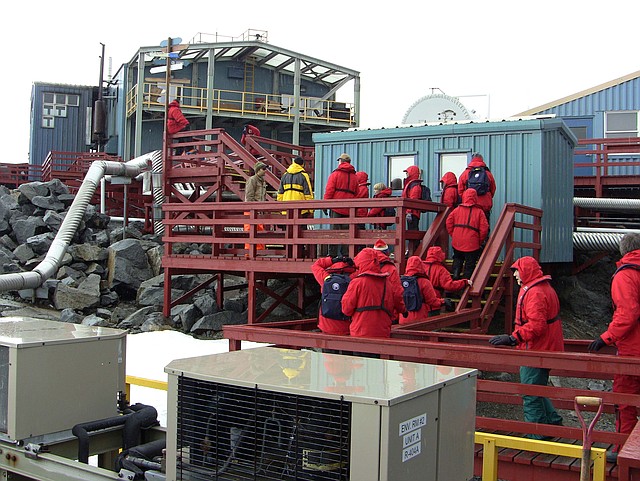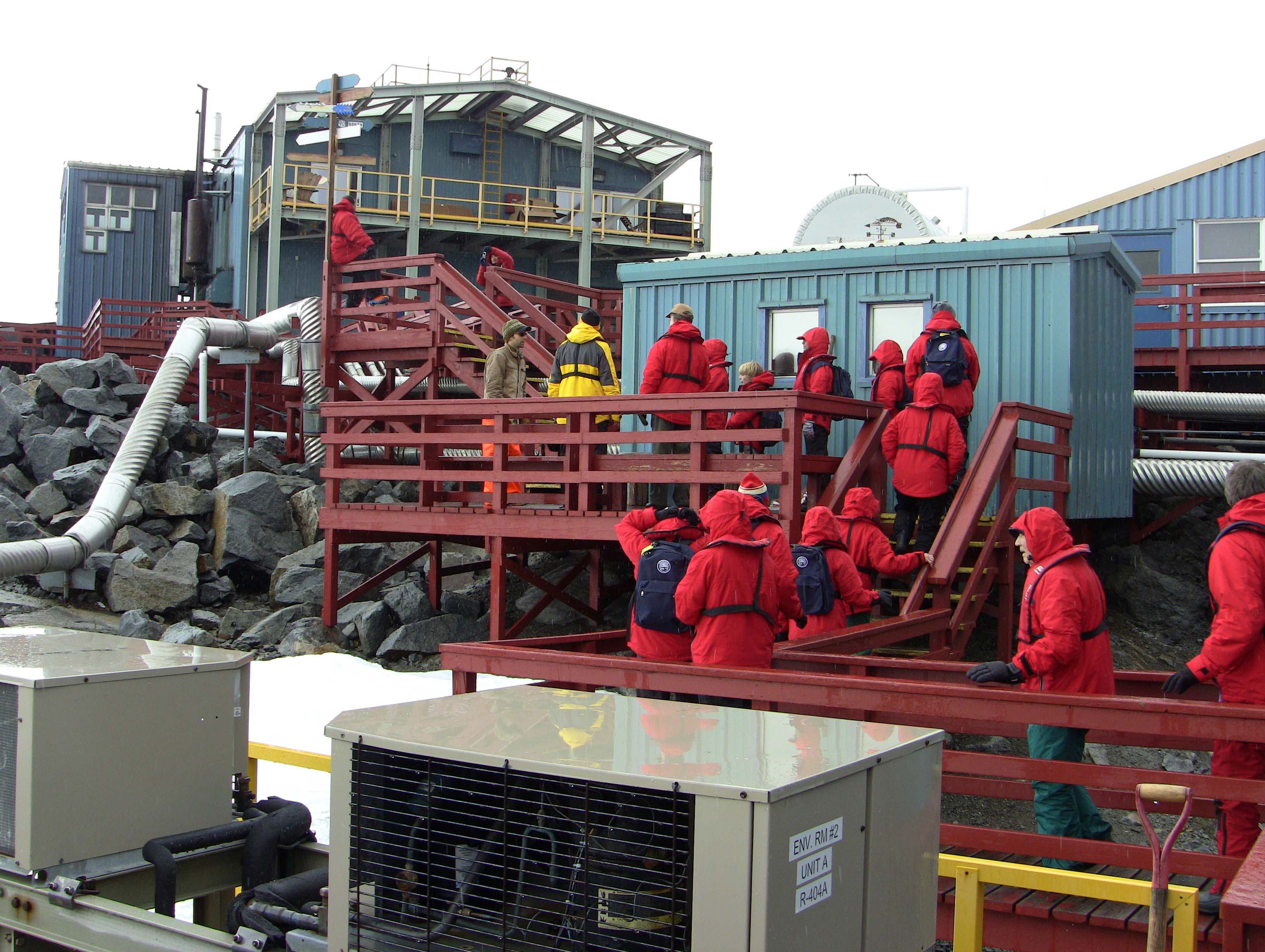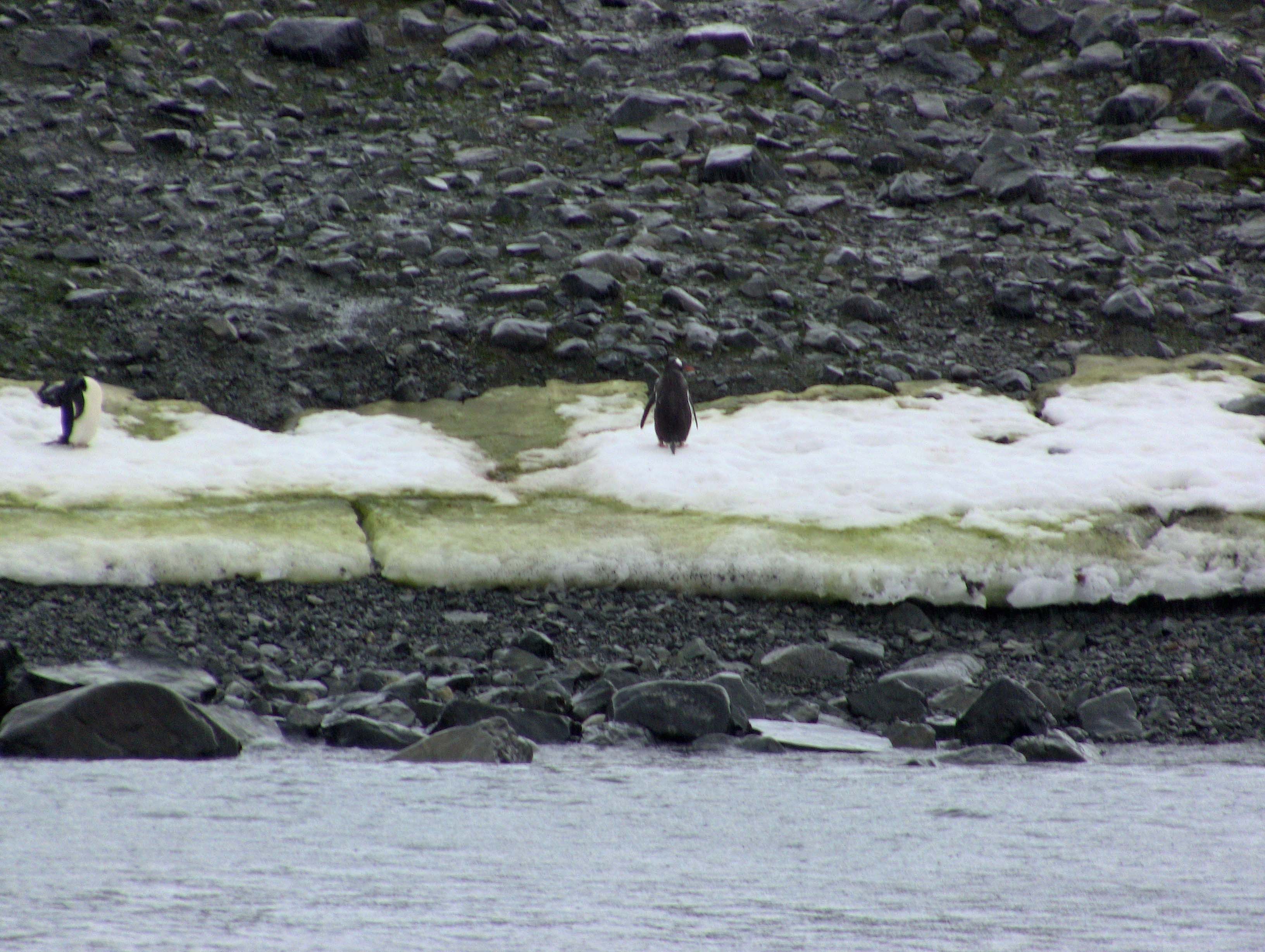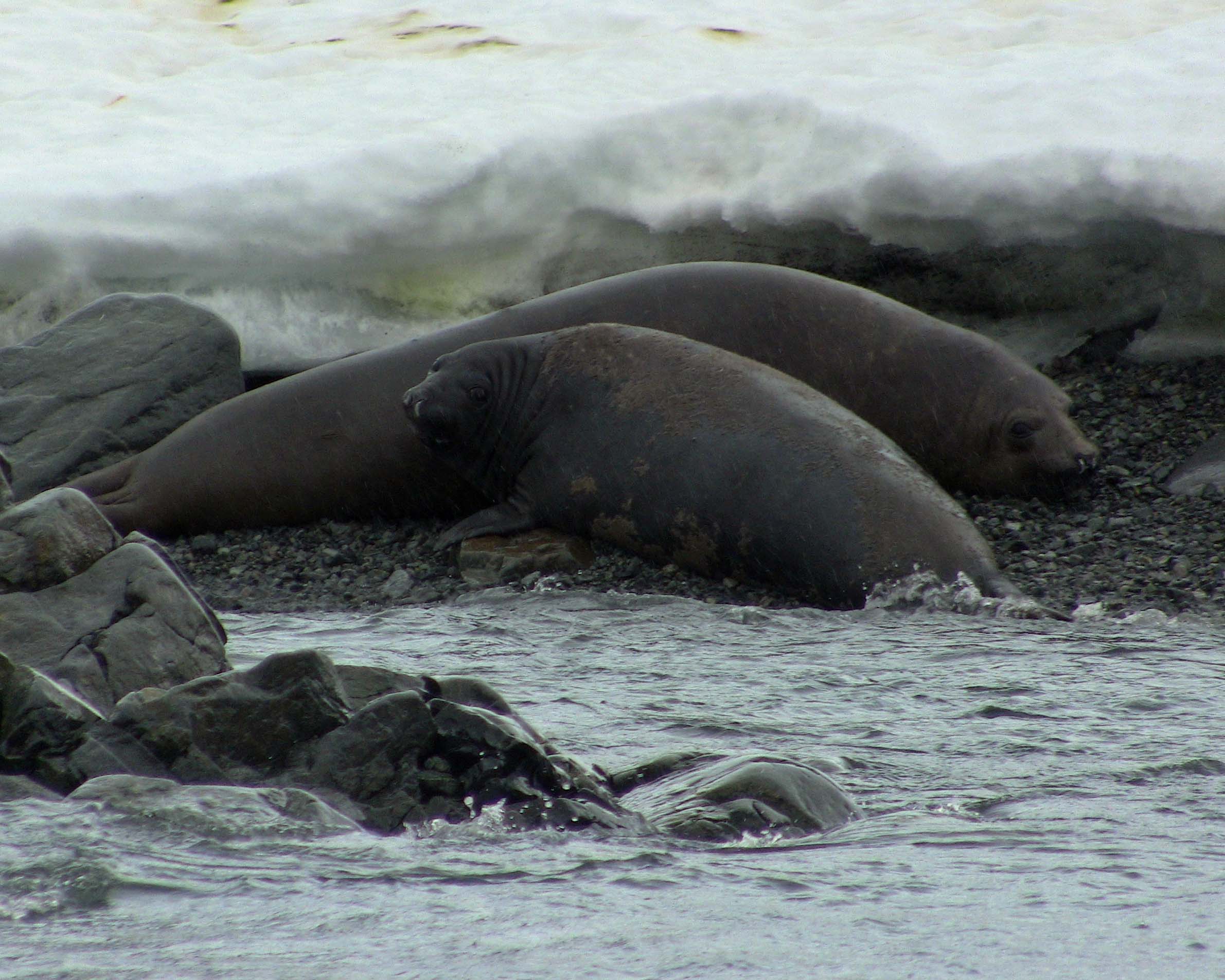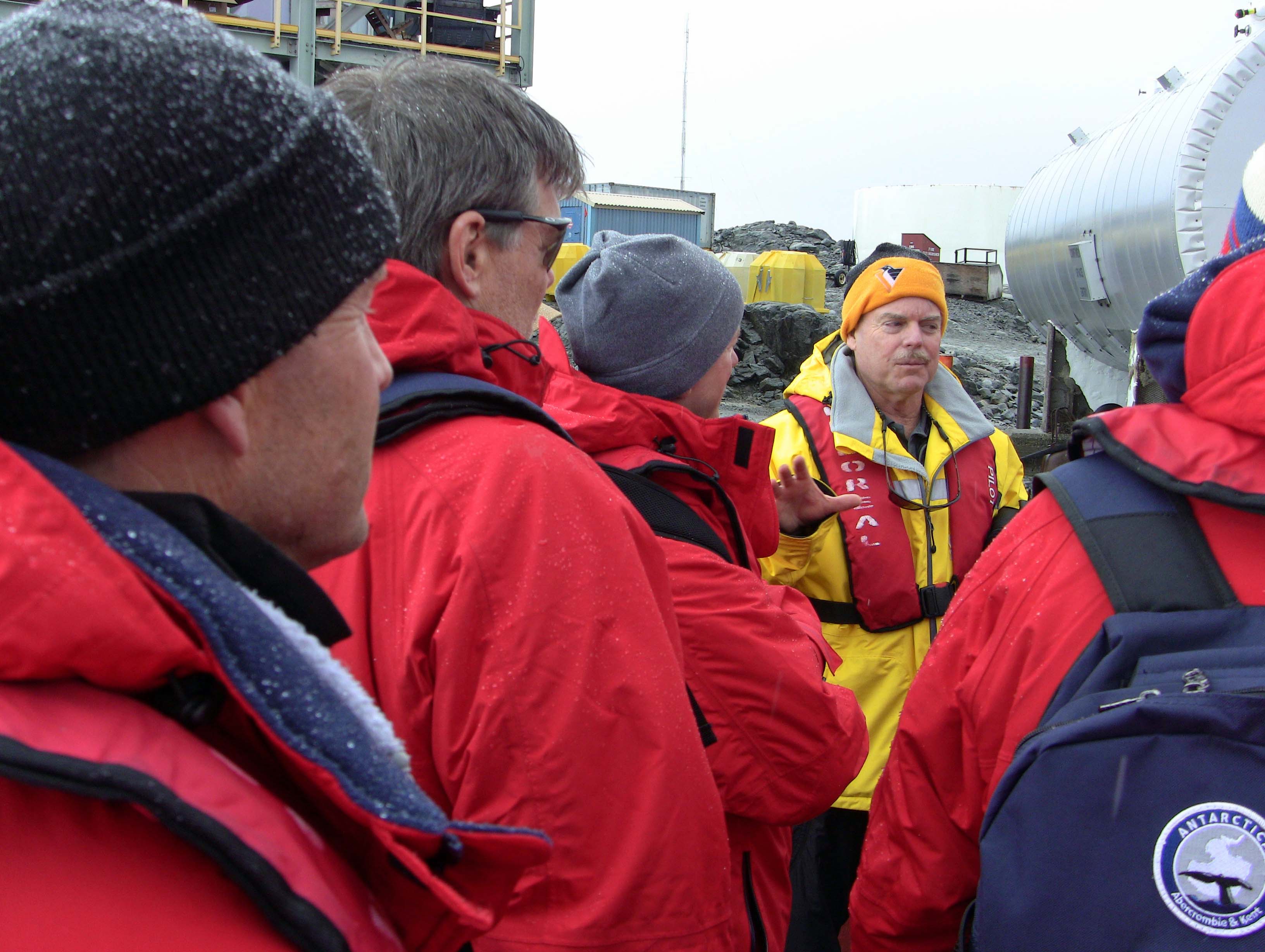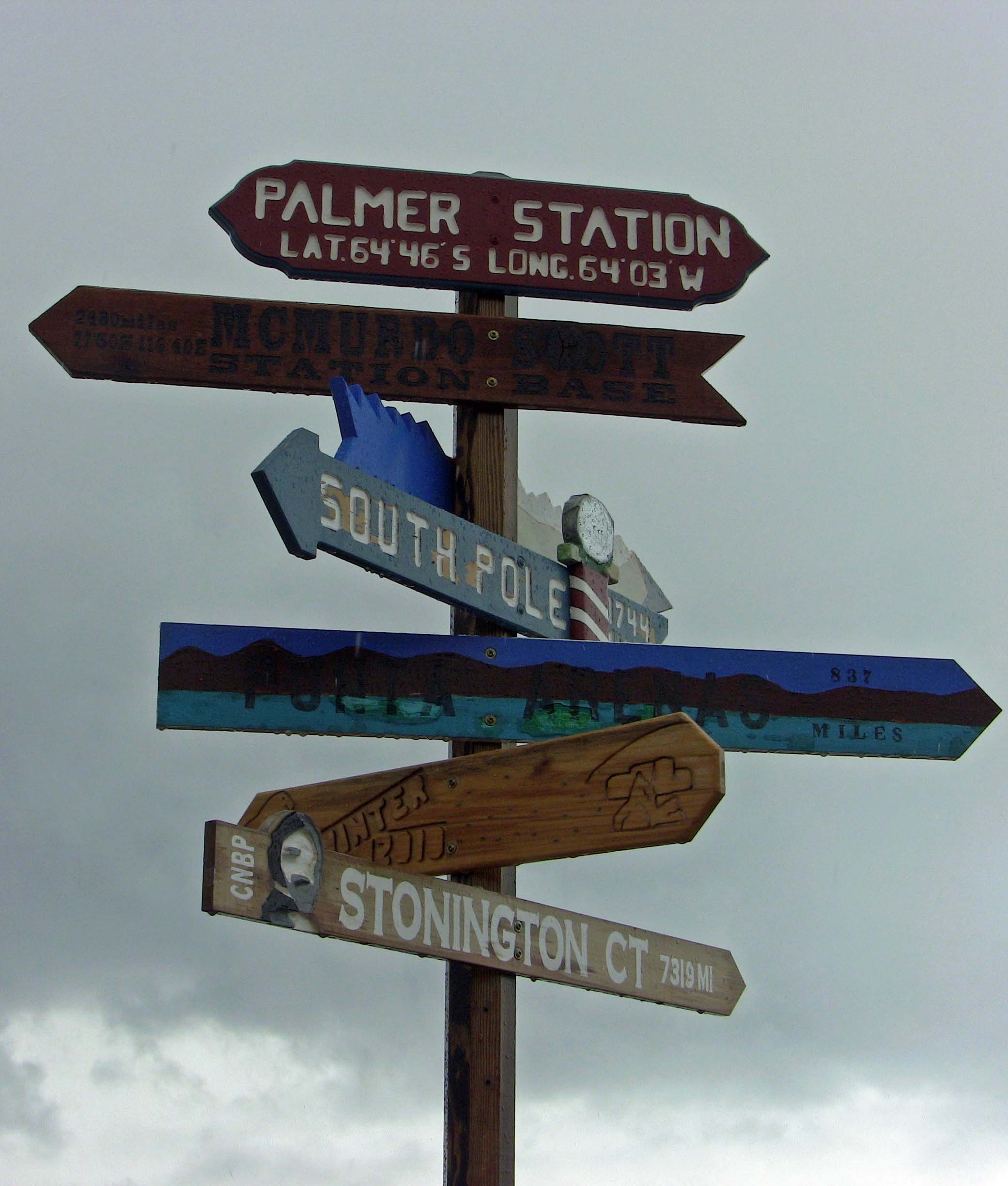Antarctica: Visiting Palmer Long Term Ecological Research Station
Monday, December 19, 2011
Thursday, December 15th, 2011
There was a patter of raindrops on my cabin window this morning. Through the light showers, I could see the Palmer Long Term Ecological Research Station across Arthur Harbor from Le Boreal. Rain in Antarctica - yet another face of the "White Continent" we are seeing at the bottom of the Earth. Rainfall is becoming more and more common in this part of the Antarctic Peninsula. And it is one of the many things scientists are studying at Palmer Station.
We began our day with a Zodiac tour of the harbor, cruising through "brash ice" before spotting southern elephant seals, one of the six species of seals that live in the southern ocean. These guys are giants, sometimes reaching five tons in weight. Most of the elephant seals we saw this morning were juveniles, lacking the trunk-like noses of the mature males. These elephant seals were molting, or replacing their fur. They are amazing animals to observe, even though they don't move much once on land. In spite of their size, most elephant seals are rather shy and docile.
Did you know that a 10,000 pound elephant seal is not the largest Antarctic animal? If not, what is?
Senior educator Julia Gregory and the kids who are part of The Tennessee Aquarium's Bug Club: http://www.tnaqua.org/Education/BugClub.aspx http://www.tnaqua.org/Education/BugClub.aspx will be interested to know the answer.
It's a trick question, because the answer is an insect called the wingless midge, which grows to a whopping three millimeters in length. This insect lives its entire life cycle on land, so it can be considered Antarctica's largest animal. Entomologists have been coming to Palmer Research Station to study these amazingly hearty larvae for quite awhile now. They want to better understand how these creatures can survive being frozen, almost completely dehydrated and how they can be deprived of oxygen for long periods of time without perishing.
Learn more about the amazing survival adaptations of Antarctica's insects by reading the NewScientist: "Zoologger: Chill out with the world's coldest insect"
http://www.newscientist.com/article/dn21231-zoologger-chill-out-with-the-worlds-coldest-insect.html?DCMP=OTC-rss&nsref=online-news http://www.newscientist.com/article/dn21231-zoologger-chill-out-with-the-worlds-coldest-insect.html?DCMP=OTC-rss&nsref=online-news
We also saw an Adelie penguin colony along with a few chinstraps and some gentoos. Researchers at Palmer Station have been tracking a rather rapid decline in the Adelie populations in the past several years. This is caused partially by the rainy weather that occurs as eggs are being incubated or when the chicks begin to emerge. Ideally the eggs and young would experience cold and mainly dry weather, but warmer and wetter conditions have been happening with more frequency. Gentoos are also moving farther south into the Antarctic Peninsula.
One of the projects Dr. McClintock is researching is what is happening in the ocean. The waters are warming here, as well as becoming more acidic. And as a result, the delicate balance of life is changing literally before our eyes. King crabs are moving up the Antarctic Shelf like an alien invasion. And in fact, creatures with crushing claws are aliens here. See what this looks like on Mongabay.com, "Antarctic crabs warming up to invade continental shelf, threatening unique marine community." http://news.mongabay.com/2011/1115-ucsc_tung_antarctica_crabs.html http://news.mongabay.com/2011/1115-ucsc_tung_antarctica_crabs.html
We may be losing medical breakthroughs in the process of these oceanic changes. Dr. McClintock has already discovered one chemical compound that shows great promise in fighting one of the most aggressive forms of skin cancer and another that helps prevent flu viruses like H1N1. Many of these Antarctic sea creatures have chemical defenses that help them survive attacks from predators. Researchers at Palmer are investigating these chemicals to see if there are additional, potentially life-saving, applications.
Everyone aboard this Abercrombie & Kent expedition had a portion of their cruise cost set aside to purchase a piece of scientific equipment for the researchers at Palmer. This year's gift was handed over to them aboard Le Boreal.
It was an international affair, as Dr. McClintock invited one passenger from each of the twelve nations aboard this cruise, to join him on stage to present this new tool to the scientists.
We toured the research station, including their Aquarium. Unfortunately, the researchers that will be collecting and studying sea creatures will not arrive until sometime in January so we were not able to get up close and personal to ice fish or sea stars. The staff met us for brownies and coffee at the end of the tour and answered all of our questions before we returned to our floating home away from home.
Palmer is one of three U.S. research stations in Antarctica and the austral summer, right now, is the season for most of the scientific field work to be accomplished. I was surprised to learn that the South Pole station is one of the best places on the planet to study astronomy. The location is high in altitude, the air is clear and the stars rotate in a giant circle above the pole. And believe it or not, it's a great place to go on a cosmic scavenger hunt - looking for meteorites. According to the Washington Post, the so-called "Poor Man's Space Program" will celebrate it's 35th anniversary this year. http://www.washingtonpost.com/national/health-science/at-the-bottom-of-the-world-a-controversial-search-for-cosmic-leftovers/2011/12/02/gIQAUU8hTO_story.html http://www.washingtonpost.com/national/health-science/at-the-bottom-of-the-world-a-controversial-search-for-cosmic-leftovers/2011/12/02/gIQAUU8hTO_story.html
We won't be searching for meteorites tomorrow, but we will have a lot of fun with gentoo penguins.
